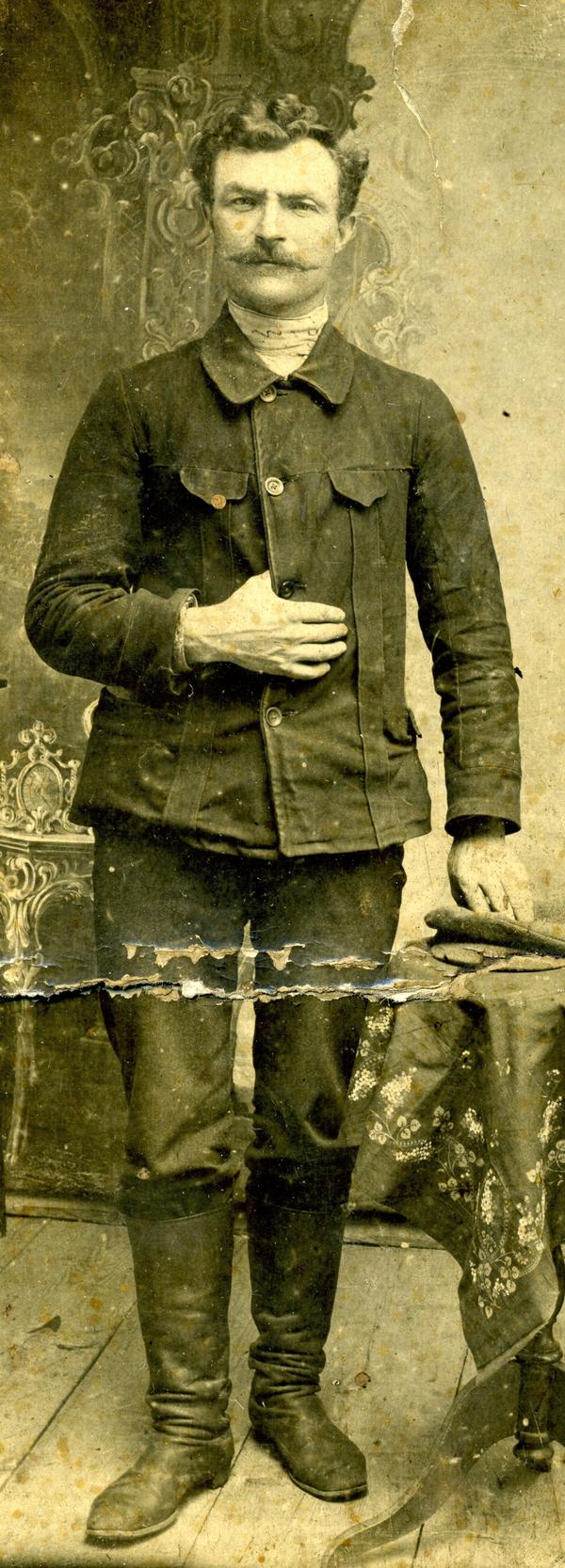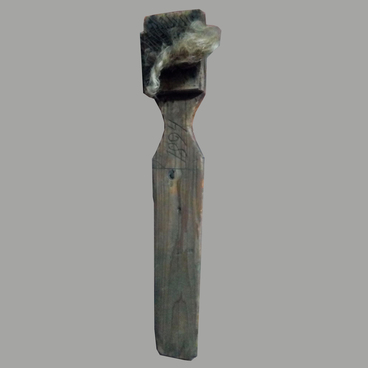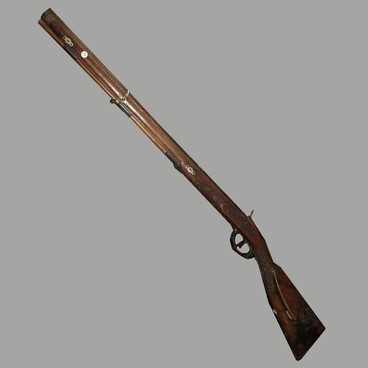The photo shows Andrey Gavrilovich Petrakov – a revolutionary, first Chairman of the Council of Deputies of Kuznetsk. His real name was Andrey Petukhov.
He was born in Kholmets village of the Moscow Governorate, into a peasant family. From an early age, he lived in want, and worked in well-to-do families. He was a soldier of the Preobrazhensky Regiment when the first Russian revolution occured. He was arrested and deported to Lena Region for participation in the revolutionary events. In 1912, he was an active participant in the Lena strike. After the Lena events, Petukhov arrived in Kuzbass with documents in the name of Petrakov. He worked as a bricklayer and carpenter in the construction of the Kolchuginskaya railway in the vicinity of the village of Bukino.
In 1917, he stood at the head of the struggle for the establishment of Soviet power in Kuznetsk County. In the village of Bukino he was first elected Chairman of the Council of Workers’ Deputies, in March 1918 during the Congress of Kuznetsk County Councils (officially the Peasant Congress of the county) elected Chairman of the Kuznetsk District Executive Committee. The first Council of Deputies under A. G. Petrakov developed a wide range of activities to improve the lives of the poorest strata of Kuznetsk and the entire county. During the three months that the Council of Deputies was in power, they found a way to set fixed prices for essential foodstuffs, provide the poor people of Kuznetsk with free construction timber to build houses and a number of other significant activities. But the peaceful process of building of a new system would evoke resistance of the counterrevolution. The White Czechs' rebellion that followed at the end of May 1918 led to an open protest of the White Guard in Siberia against the Soviet regime. The forces were unequal. The Red Guard troops that were small in numbers could not stop the advancing counter-revolutionary formations. Soon, almost the entire Kuznetsk Council of Deputies was caught up by hit squads and put in Tomsk prison. Andrey Gavrilovich Petrakov was caught too. Having held out against the difficulties and torments in the confines of the White Guard, in 1919 he was released from custody. But as a person of active nature, Petrakov felt keenly the current moment, wishing fervently to struggle to overthrow the hateful White Guard regime. Andrey Petrakov moves to Trans-Baikal, where he begins to campaign against the power of Grigory Semyonov, but in March 1920, the fiery revolutionary was captured and soon shot.
In memory of the first Chairman of the Council of Deputies of Kuznetsk district, on November 2, 1967, by the decision of the Novokuznetsk City Executive Committee, Svetlaya Street in Kuznetsk district of the city was named after Andrey Gavrilovich Petrakov.
He was born in Kholmets village of the Moscow Governorate, into a peasant family. From an early age, he lived in want, and worked in well-to-do families. He was a soldier of the Preobrazhensky Regiment when the first Russian revolution occured. He was arrested and deported to Lena Region for participation in the revolutionary events. In 1912, he was an active participant in the Lena strike. After the Lena events, Petukhov arrived in Kuzbass with documents in the name of Petrakov. He worked as a bricklayer and carpenter in the construction of the Kolchuginskaya railway in the vicinity of the village of Bukino.
In 1917, he stood at the head of the struggle for the establishment of Soviet power in Kuznetsk County. In the village of Bukino he was first elected Chairman of the Council of Workers’ Deputies, in March 1918 during the Congress of Kuznetsk County Councils (officially the Peasant Congress of the county) elected Chairman of the Kuznetsk District Executive Committee. The first Council of Deputies under A. G. Petrakov developed a wide range of activities to improve the lives of the poorest strata of Kuznetsk and the entire county. During the three months that the Council of Deputies was in power, they found a way to set fixed prices for essential foodstuffs, provide the poor people of Kuznetsk with free construction timber to build houses and a number of other significant activities. But the peaceful process of building of a new system would evoke resistance of the counterrevolution. The White Czechs' rebellion that followed at the end of May 1918 led to an open protest of the White Guard in Siberia against the Soviet regime. The forces were unequal. The Red Guard troops that were small in numbers could not stop the advancing counter-revolutionary formations. Soon, almost the entire Kuznetsk Council of Deputies was caught up by hit squads and put in Tomsk prison. Andrey Gavrilovich Petrakov was caught too. Having held out against the difficulties and torments in the confines of the White Guard, in 1919 he was released from custody. But as a person of active nature, Petrakov felt keenly the current moment, wishing fervently to struggle to overthrow the hateful White Guard regime. Andrey Petrakov moves to Trans-Baikal, where he begins to campaign against the power of Grigory Semyonov, but in March 1920, the fiery revolutionary was captured and soon shot.
In memory of the first Chairman of the Council of Deputies of Kuznetsk district, on November 2, 1967, by the decision of the Novokuznetsk City Executive Committee, Svetlaya Street in Kuznetsk district of the city was named after Andrey Gavrilovich Petrakov.



